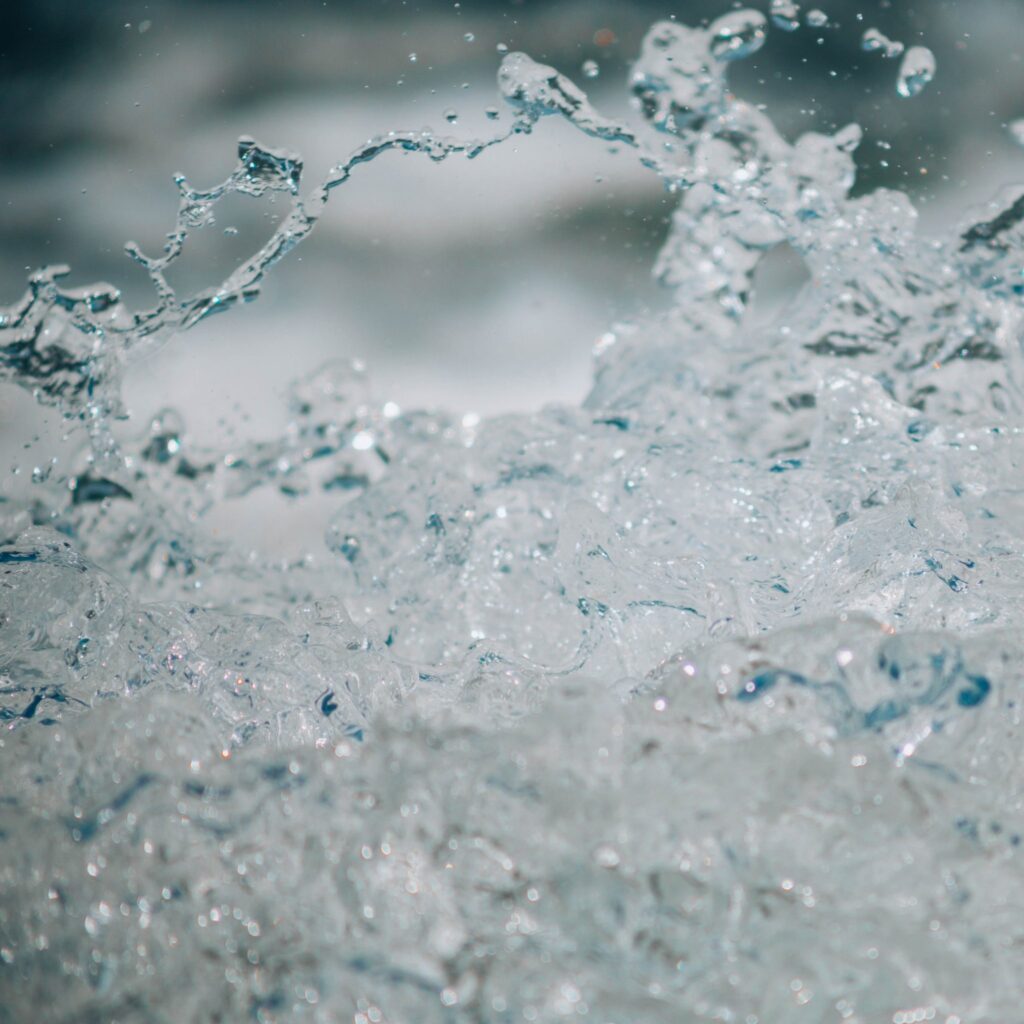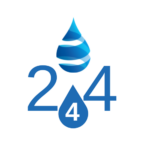FRESH WATER: A PRECIOUS NATURAL RESOURCE

Water is elemental. Crucial for life as we know it. Finite in supply—particularly fresh water—it is chronically degraded by pesticides, herbicides, fossil fuels operations, discarded plastics, and countless other contaminants. Add it all up and it seems like the perfect combination of inelastic demand and diminishing supply. In fact, 2.2 billion people around the world do not have safely-managed drinking water services and 4.2 billion people don’t have safely-managed sanitation services. In the U.S. alone, fully one in six gallons of the fresh water we produce is wasted through old, leaky, deteriorating infrastructure, equaling 6 billion gallons of treated water wasted every single day before it has a chance to be consumed or otherwise put to productive use.
The World Economic Forum reports that the significance of the role that water plays in the world cannot be overstated. Water has determined where cities are built and where conflicts break out. Water means equality: local water resources and separate toilets can determine whether a girl accesses education. An estimated $260 billion is lost globally every year due to the lack of basic water and sanitation. Neglecting water risks (pollution; over-usage, aging infrastructure, dehydration) will cost us billions more in the future versus addressing these risks now.
With big risks come big opportunities. SilverPeak Wealth is watching closely developments around the globe as clean water technology could be a future growth sector.
@ World Economic Forum
FUN WATER FACTS:
Fact 1. The agricultural sector worldwide takes about 70% of the water from the planet’s freshwater reserves.
Fact 2. On average, you lose 10 gallons of water footprint to leaks every day. This accounts for about 14% of your daily indoor water use. To minimize your water footprint, you should at least repair any leaky faucets and toilets if you can’t afford to install new water-efficient fixtures.
Fact 3. A 1000-square foot lawn can use about 35,000 gallons of water annually. People tend to over-irrigate their lawns. If you over-irrigate this kind of lawn, you can use up to 75,000 gallons per year.
Fact 4. Turfgrass is the single largest irrigated vegetation in the United States. It covers about 5-10 million hectares or about 68% of the total land around private residences.
Fact 5. Taking a shower is more water-efficient than taking a bath. You’ll use about 40 gallons of water taking a bath, compared to 20 gallons if you take a shower. Moreover, if you use a low-flow showerhead, you can save about 14 gallons of water in a 10-minute shower.
Fact 6. On average, a person in the United States uses 160 gallons of water every day. No other country in the world comes close to this. 58% of this water is used outdoors for watering lawns and gardens. Unfortunately, half of the water that is used outdoors goes to waste due to over-watering and evaporation. Moreover, over-irrigation results in the run-off, which ends up polluting water bodies.
Fact 7. 25% of everyday water use in homes occurs in the kitchen
Fact 8. A running hose outdoors wastes about 6 gallons of water every minute when left unattended. Remember to close water hoses when not in use.
Fact 9. Dishwashing accounts for about 2% of indoor water use. This is quite a small part of your water footprint, but it can help you save water. Using a dishwashing machine is more water efficient compared to hand washing. While an automatic dishwasher uses about 9 to 12 gallons of water, hand washing can consume up to 20 gallons.
Fact 10. A cup of coffee takes about 55 gallons of water to make. Most of this water is used to grow the coffee beans.
Fact 11. A gallon of gasoline takes about 13 gallons of water to produce. To help save this water, consider combining your errands, carpooling to work, or taking public transportation to minimize your energy use.
Fact 12. Recycling one pound of paper saves nearly 3.5 gallons of water. Purchasing recycled paper products will also help save water. This is because it takes about six gallons of water to manufacture a dollar worth of paper.
Fact 13. 96.5% of all the Earth’s water is contained within the oceans as salt water, while the remaining 3.5% is freshwater lakes and frozen water locked up in glaciers and the polar ice caps.
Fact 14. Water is colorless and its appearance of water is determined by the type of dissolved substances or by the reflection of the sky. The blue color of the water seen in the ocean is as a result of reflection of the sky.
Fact 15. The freezing point of pure water is normally 0°C at standard pressure. Presence of impurities in water lowers its freezing point. The sea water freezes at a temperature of -2 °C (28.4 °F).
Fact 16. Around 780 million people globally lack access to clean water. Women in developing countries are the most affected and they walk for miles in search of it.
Fact 17. 2.6 gallons of water is used in making a sheet of paper.
Fact 18. A human body is made up of approximately 65% of water. The water in human bodies acts as a coolant, and also as a medium of chemical reactions in the body.
Fact 19. Unlike most liquids, the density of water decreases as it freezes. The density of liquid water at 1 atmospheric pressure is 1,000 kg/m3 while that of ice at the same pressure is 917 kg/m3. This phenomenon makes it possible for ice to float on water.
Fact 20. Water exists in all the three state of matter. Water is the only substance on earth that is known to exist in three states namely solid, liquid and gaseous states.
Fact 21. 71% of the earth is covered with water mostly in the oceans. Groundwater constitutes 1.7%, glaciers in the green land and Antarctica constitutes 1.7%, 0.001% in form of precipitation and 1.7% is found in form of vapor and clouds.
Fact 22. Jellyfish has 95% of its body is made up of water.
THIS POST IS GENERAL IN NATURE AND MEANT FOR INFORMATIONAL PURPOSES. IT SHOULD NOT BE CONSTRUED AS INVESTMENT ADVICE. ALL INVESTMENT STRATEGIES AND INVESTMENTS INVOLVE RISK OF LOSS. ANY REFERENCE TO PAST OR POTENTIAL PERFORMANCE IS NOT A RECOMMENDATION OR GUARANTEE OF ANY SPECIFIC OUTCOME OR FUTURE RESULTS.
PWW would like to thank SilverPeak Wealth Associates for us permission to share this great article. To learn more about SilverPeak Wealth Associates, visit their website at: https://silverpeakwealth.com/.

